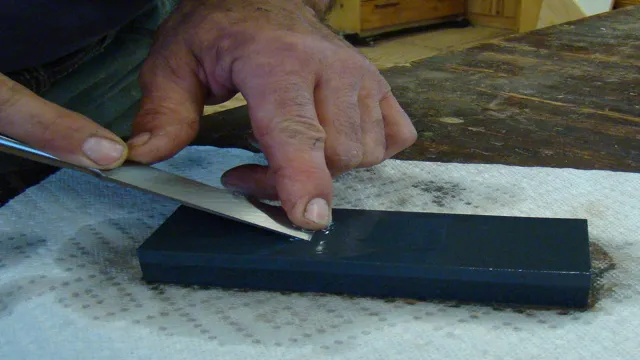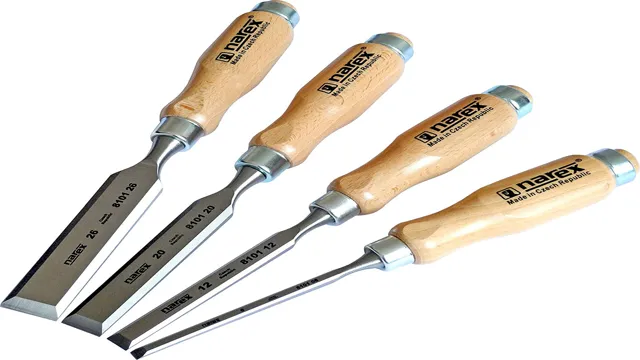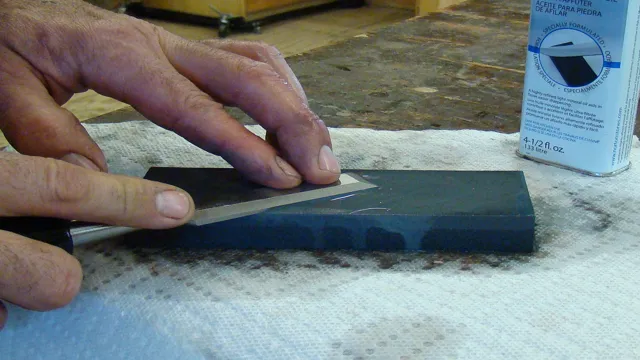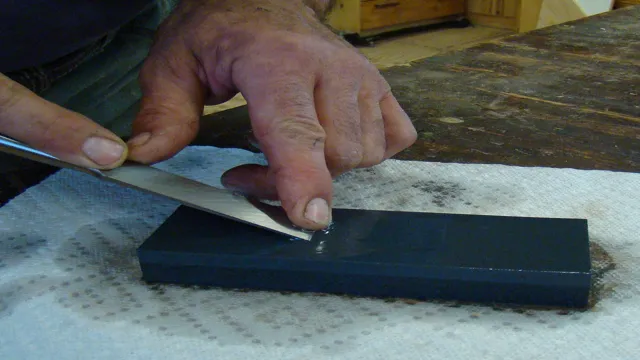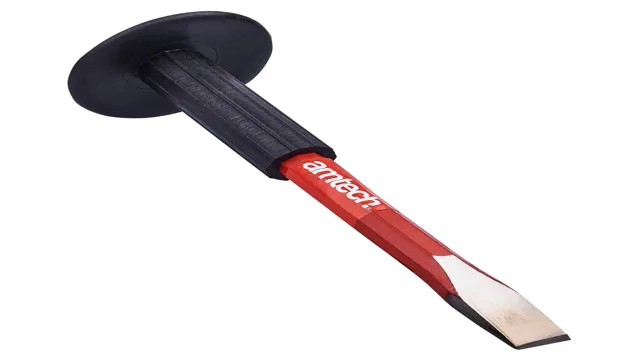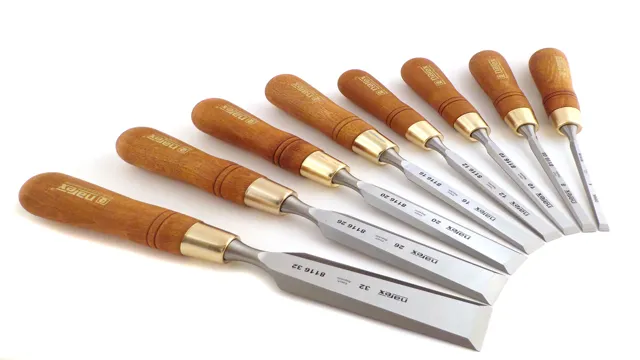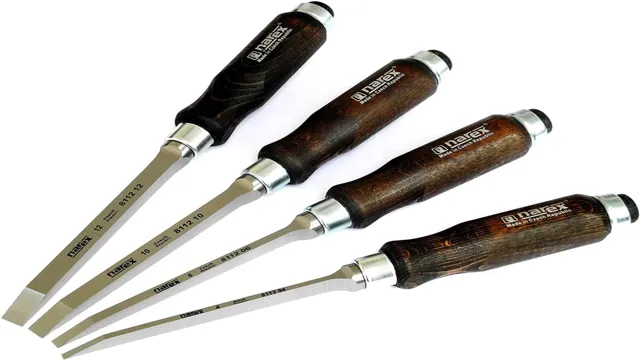What chisels to use on a lathe: A beginner’s guide to choosing the right tools
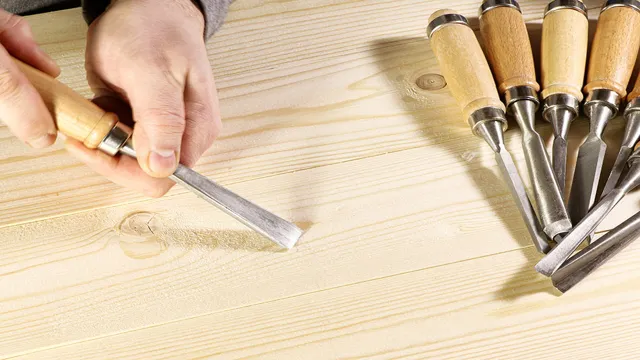
If you’re new to lathe turning, choosing the right chisels can seem daunting. With so many options available, it can be hard to know where to start. But fear not – we’ve got you covered! In this beginner’s guide, we’ll walk you through everything you need to know about choosing chisels for your lathe.
First, it’s important to know that not all chisels are created equal. Different types of chisels are designed for different tasks, so it’s essential to pick the right ones for the job at hand. From roughing gouges to parting tools, each chisel has a unique purpose and set of characteristics that make it suitable for specific tasks.
But how do you know which chisels to choose? The answer comes down to what you want to make on your lathe. For example, if you’re interested in turning bowls, you’ll need a bowl gouge. If you want to make spindles, a skew chisel would be more appropriate.
Another essential factor to consider is the size of the chisel. Larger chisels are better suited to roughing jobs, while smaller chisels are ideal for more delicate work. Additionally, the material the chisel is made from can affect its performance.
High-speed steel is a popular choice due to its durability and edge retention. Ultimately, the best way to choose chisels for your lathe is to try them out for yourself. Don’t be afraid to experiment with different types and sizes to find what works best for you.
It may take some trial and error, but with time and practice, you’ll become a pro at selecting the perfect chisel for every project.
Introduction
When it comes to using a lathe, having the right tools is crucial for achieving precise and clean cuts. One of the most important tools is the chisel, which is used to shape and remove material from the spinning wood. Choosing the right chisel can be overwhelming, but it largely depends on the type of work you plan on doing.
For a beginner, it is recommended to start with a basic set of chisels such as a roughing gouge, spindle gouge, and a parting tool. As you become more experienced, you may want to invest in more specialized chisels such as a bowl gouge, skew chisel, or a scraper. It’s important to keep your chisels sharp and well-maintained to ensure the best results.
With the right chisels and practice, you’ll be turning beautiful wooden creations in no time.
Defining Chisels for Lathes
Chisels for lathes are an essential tool for woodworkers and metalworkers alike, providing a precise cutting edge that makes achieving a smooth, even finish possible. They come in a wide variety of shapes and sizes, each designed for a specific task. Understanding the different types of chisels available and their unique properties is essential to choosing the right tool for the job.
From roughing out material to delicate finishing work, chisels play a vital role in shaping and refining the final product. So whether you’re a seasoned professional or just starting out, it’s important to select the right type of chisel for your next project.

Considerations for Choosing Chisels
Chisels are an essential tool for woodworking, carving, and masonry work. Choosing the right chisel can make a huge difference in the quality of your work and the ease of completing it. When selecting a chisel, it’s important to consider factors such as the type of material you’re working with, the size of the chisel, the shape of the blade, and the handle.
The material of the chisel affects how well it will hold an edge and how durable it is. The size and shape of the blade are vital as they determine the precision and level of detail you can achieve in your work. The handle of the chisel should be comfortable and easy to grip, ensuring that you can work for extended periods without hand fatigue.
By carefully weighing these factors, you can choose the right chisel for your project, whether you’re a beginner or a seasoned professional.
Types of Chisels
Chisels are important tools for woodworkers, carvers, and metalworkers. There are different types of chisels available, each with a specific use. The most common types of chisels are bench chisels, mortising chisels, wood carving chisels, and pneumatic chisels.
Bench chisels are the most basic and commonly used chisels that are used for making cuts and shaping wood. They have a flat or slightly curved blade and come in different sizes. Mortising chisels are used for making mortises in wood, while wood carving chisels are used by woodcarvers to create intricate designs and shapes.
Pneumatic chisels are powered by compressed air and are used for heavy-duty tasks such as carving away metal or stone. Each type of chisel has its own unique characteristics, making them suitable for different purposes. If you are interested in woodworking or metalworking, understanding the different types of chisels will help you choose the right tool for your project.
Recommended Chisels for Lathe Work
When it comes to doing lathe work, having the right chisels can make all the difference. There are a few essential chisels that every turner should have in their arsenal. The first is a roughing gouge, which is used to round out rough stock and create basic shapes.
Another important chisel is a spindle gouge, which is used for fine detail work and creating intricate shapes. A skew chisel can be used for a variety of purposes, from roughing out a shape to creating smooth, precise cuts. Finally, a parting tool is essential for separating parts and creating grooves.
When selecting chisels, look for high-quality brands that are made from durable materials and have a comfortable grip. With the right chisels, you can create beautiful, high-quality turned objects that will last for years to come.
Spindle Gouges
When it comes to lathe work, spindle gouges are an essential tool in a turner’s arsenal. These chisels are specifically designed to create smooth curves and deep grooves in wood, making them ideal for shaping spindles and other cylindrical objects. When looking for spindle gouges to add to your collection, it’s important to consider the quality and size of the tool.
A good starting point is to look for chisels made from high-quality carbon steel, as they hold an edge well and can be easily sharpened when needed. Additionally, you may want to consider purchasing a variety of different sizes to suit different projects and needs. Overall, spindle gouges are an excellent investment for any turner looking to take their lathe work to the next level.
Bowl Gouges
When it comes to lathe work, bowl gouges are an essential tool. They are versatile and perfect for turning bowls, platters, pens, and other projects. A high-quality bowl gouge will feature a sturdy handle and a sharp, durable blade that can withstand the rigors of lathe work.
But which bowl gouges are the best? Recommended options include the Crown Tools Pro PM Bowl Gouge, the Robert Sorby ⅜” Bowl Gouge, and the Hurricane M2 Bowl Gouge. Each of these options has a different blade size, handle design, and price point, so choosing the right one ultimately depends on individual preferences and needs. Whether you’re a seasoned lathe worker or just starting, investing in a high-quality bowl gouge will make all the difference in the quality of your work.
So why settle for mediocrity when these top-notch options are available?
Skew Chisels
Skew chisels are a popular tool among woodturners for their versatility and precision. If you’re looking for recommended chisels for lathe work, skew chisels should be at the top of your list. These chisels have a flat and angled blade, allowing for clean cuts and smooth finishes.
They can also be used for both spindle and bowl turning, making them a must-have in any woodturner’s toolbox. One thing to keep in mind when using skew chisels is to practice proper technique to avoid snagging or catching the wood. With a little practice, skew chisels will become your go-to tool for turning intricate designs and achieving excellent detail in your work.
Parting Tools
Parting tools are some of the most important tools in a woodworker’s or metalworker’s arsenal. Choosing the right one for your lathe work can greatly impact the quality of your final product. There are a variety of chisels available on the market, but the best ones for lathe work are typically made of high-speed steel.
For versatility, it’s recommended to have at least two different sizes on hand, with a smaller one for detailed work and a larger one for more heavy-duty projects. Another important consideration is the angle of the tool itself–specifically, the angle at which the cutting edge meets the flat of the chisel. This can vary depending on your particular project, but in general, a lower angle will give you sharper cuts, while a higher angle will provide more overall strength.
With the right chisels and some practice, you’ll be able to create precise, professional-looking work on your lathe in no time.
Roughing Gouges
If you’re looking to get started with lathe work, one of the essential tools you’ll need is a roughing gouge. This chisel is designed to remove the bulk of the material from a workpiece quickly. It’s also handy for shaping cylindrical objects, such as chair legs or table legs.
When shopping for a roughing gouge, look for one that is made from high-speed steel. This material holds an edge well and is very durable. You’ll also want to choose a gouge with a properly shaped flute.
The flute is the concave channel that runs lengthwise along the blade. A well-formed flute will allow the gouge to clear chips from the workpiece efficiently. You should also pay attention to the size of the gouge.
A larger gouge will remove material more quickly, while a smaller gouge will be more maneuverable and allow you to work on more intricate details. Ultimately, the right roughing gouge for you will depend on the type of work you plan to do and your personal preferences. But with a good quality gouge in hand, you’ll be on your way to creating beautiful turned pieces in no time.
Conclusion
In the world of lathing, choosing the right chisel is crucial to the success of your project. It’s like choosing the perfect dance partner – you want someone who can keep up with your rhythm and follow your lead. So whether you prefer a roughing gouge, skew chisel, or parting tool, make sure you choose your chisel wisely and let the chips fly! After all, a dull chisel is no better than a clumsy dance partner – they’ll both leave you tripping over your own two feet.
“
FAQs
What types of chisels are used on a lathe?
The types of chisels used on a lathe include spindle gouges, bowl gouges, parting tools, skew chisels, and roughing gouges.
How do you choose the right chisel for a specific lathe project?
You should choose a chisel based on the type of cut you want to make and the type of wood you are working with. For example, a spindle gouge is perfect for making coves, while a bowl gouge is best suited for shaping bowls.
What is the difference between high-speed steel and carbon steel lathe chisels?
High-speed steel chisels are more durable and hold their sharpness longer than carbon steel chisels. However, carbon steel chisels are less expensive and easier to sharpen.
How often should you sharpen your lathe chisels?
It is recommended to sharpen your chisels every 2-3 hours of use, or when you notice that they are starting to dull. Keeping your chisels sharp will help you achieve smoother and more precise cuts.
Can you use wood-carving chisels on a lathe?
While it is possible to use wood-carving chisels on a lathe, it is not recommended. Wood-carving chisels are not designed for the high speeds and forces of a lathe, and may break or become dangerous to use.
How do you maintain the sharpness of your lathe chisels?
To maintain the sharpness of your chisels, you should store them properly, keep them clean and dry, and sharpen them regularly. You can also use honing tools or a sharpening jig to help you maintain a consistent angle while sharpening.
What are some safety precautions to take when using lathe chisels?
Always wear eye and ear protection when using lathe chisels, and avoid wearing loose clothing or jewelry that could get caught in the machine. Always use a tool rest and keep your hands away from the spinning wood.

